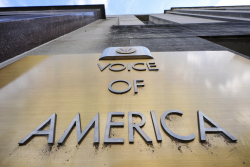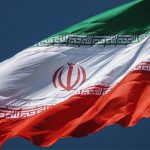The current state of United States-South Korea nuclear cooperation, as South Korean nuclear technology has attained full development, could best be described as being in a state of “coopetition.”
In today’s interconnected economy, alliances are no longer simple. Nations increasingly operate within complex relationships that blend cooperation and competition.
This phenomenon, known as “coopetition,” has become central to success, especially in the technology and energy sectors.
For the United States and South Korea (ROK), adopting a coopetitive approach could define the future of their nuclear partnership in an era of global uncertainty.
Smartphone Rivals, Supply Chain Partners: Lessons from Apple and Samsung
Few industries illustrate coopetition better than the smartphone sector.
Apple and Samsung are fierce competitors that are fighting for dominance in the global smartphone market.
In the fourth quarter of 2024, Apple captured twenty-three percent of global smartphone markets, slightly ahead of Samsung, which held sixteen percent. This continued their fierce rivalry for market leadership, particularly in North America and Europe, where Apple’s premium devices maintain a strong customer base.
Yet behind this competition lies a complex web of cooperation.
Samsung Display supplies approximately sixty-six percent of the OLED display panels for Apple’s iPhone 16 series, maintaining its role as its primary supplier. Additionally, Samsung manufactures the critical memory chips used in various Apple devices. Actually, South Korean components account for nearly one-third of the iPhone’s total value.
Meanwhile, Samsung smartphones depend significantly on American-designed components. Many of Samsung’s flagship models, including the Galaxy S and Z series, use Qualcomm Snapdragon as application processors (AP), while the majority of its devices are powered by Google’s Android operating system (OS).
This intertwined relationship has driven remarkable market growth.
Between 2010 and 2024, global smartphone shipments expanded from approximately 300 million to over 1.23 billion units annually, marking a 6.4% year-over-year growth in 2024 alone, according to the International Data Corporation (IDC).
Innovation flourished not only because of fierce competition but also because of supply chain cooperation that accelerated development and expanded the entire market.
The lesson is clear: strategic rivals can grow their markets faster when they collaborate intelligently.
Lessons for United States-Korea Nuclear Cooperation
The United States and South Korea’s nuclear partnership is shaped by a complex mix of competition and collaboration.
Each country has developed its own signature reactor: Westinghouse’s AP1000 in the United States and KHNP’s (Korea Hydro & Nuclear Power) APR1400 in South Korea. These models now compete in global markets, from the Middle East to Eastern Europe, much like Apple and Samsung compete in the smartphone world.
But this rivalry is built on a history of deep interdependence.
South Korea’s nuclear capabilities were initially developed through the adoption of American technology, and today, select U.S. nuclear projects still rely on key components manufactured by South Korean firms.
This dynamic reflects a form of “strategic coopetition,” where mutual benefit arises from shared capability, even amid global competition.
South Korea has become a trusted global player in nuclear construction and operation, while the United States maintains leadership in advanced R&D, licensing, and innovation.
Their combined strengths have elevated international standards for reactor safety, project delivery, and operational excellence.
The rise of next-generation nuclear technologies such as small modular reactors (SMRs) has sparked new waves of competition between the two countries.
Both seek leadership in emerging markets and yet these developments also open the door to meaningful collaboration.
Joint R&D, harmonized safety standards, and co-deployment strategies could allow the United States and South Korea to lead the global SMR market more effectively together than they can apart.
Rather than pursuing a zero-sum mindset, both countries should embrace this competitive partnership—where innovation is fueled by rivalry, but success is built through cooperation.
Strategic Implications: How to Build a Resilient Nuclear Supply Chain
The growing complexity of global energy markets demands resilient and trusted partnerships.
Russia’s invasion of Ukraine exposed vulnerabilities in fossil fuel supply chains, while China’s dominance over critical minerals has heightened concerns about strategic dependencies.
In this environment, nuclear energy stands out as a secure, low-carbon alternative—but only if supply chains are stable and diversified.
Here again, the United States-Korea relationship offers unique advantages.
South Korean companies provide high-quality reactor components, heavy forgings, and precision manufacturing capabilities that complement U.S. technology leadership.
Meanwhile, the United States brings advanced research and development capabilities, robust innovation ecosystems, and full-spectrum expertise across the nuclear fuel cycle
By integrating their supply networks, and by investing jointly in uranium enrichment, SMR component production, and advanced fuel fabrication, the two countries can build a robust, distributed nuclear ecosystem.
Such an alliance would reduce exposure to geopolitical shocks, enhance the security of supplies for future reactor deployments, and strengthen collective resilience against emerging competitors.
Moreover, a United States -Korea nuclear supply partnership could set global standards for safety, nonproliferation, and sustainable energy development—helping to shape a new era of international nuclear governance.
A Future of Strategic Coopetition
The United States and South Korea are not just competitors in the nuclear market—they are interdependent partners shaped by decades of shared progress.
From large reactors to emerging technologies like SMRs, their rivalry continues to drive innovation. But their greatest strength lies in strategic coopetition: competing where necessary, collaborating where it counts.
By embracing a strategy of competitive collaboration, both nations can not only secure their own energy futures but also lead the global transition to safer, smarter nuclear energy.
About the Author: Donghoon Lee
Donghoon Lee is the section head for Global Strategy Research at KAERI (Korea Atomic Energy Research Institute). In this role, he leads research and develops strategies on global nuclear policy to strengthen international cooperation on the peaceful use of nuclear energy. His work includes bilateral partnerships as well as active engagement in multilateral frameworks such as the IAEA and the Nuclear Suppliers Group (NSG), which play critical roles in advancing global nonproliferation efforts. His current focus is on enhancing U.S.-Korea nuclear collaboration. From 2019 to 2022, he served as the Representative of KAERI’s Washington, D.C. Office. “
Image: Shutterstock/barmalini


















